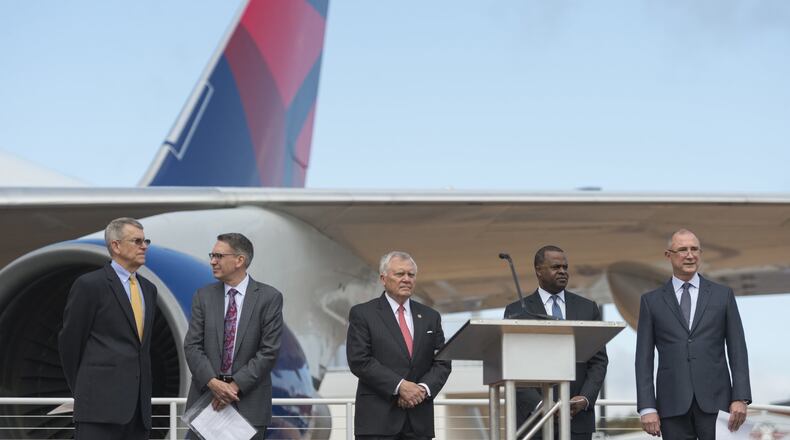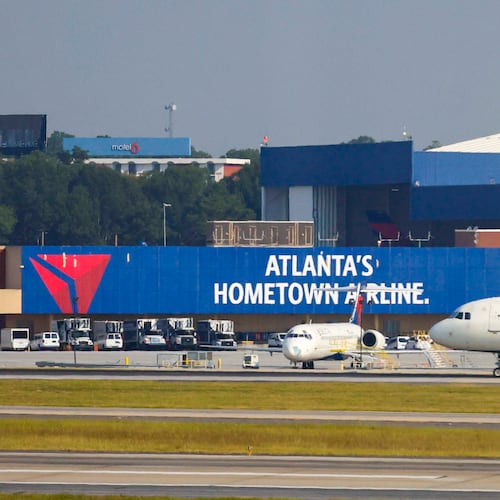As the Boeing 747 begins its descent into history at Delta Air Lines, the company opened a jumbo jet-sized exhibit at its museum near Hartsfield-Jackson International Airport.
Atlanta-based Delta plans to retire the 747 from its fleet in December. With United also retiring its 747s this year, that will mark the end of the jumbo jet’s run at U.S. passenger airlines.
But Delta has preserved one of them— the first 747-400 built for an airline — as an interactive exhibit that sits outside the Delta Flight Museum at its headquarters.
The 747 was “a technological wonder” when it debuted, said John Boatright, president of the museum.
The exhibit opened to the public Tuesday with Atlanta Mayor Kasim Reed and Gov. Nathan Deal on hand. The museum is offering a promotional $7.47 admission rate on Tuesday and Wednesday. After that, the regular adult admission fee for the museum including the "747 Experience" increases to $15.
Development of the 747-400, an improved version designed in the 1980s, wasn’t easy, said Randy Tinseth, a Boeing executive who attended Tuesday’s opening.
“The airplane was late. The airplane was heavy. And it wasn’t meeting the performance guarantees that our airline customers expected of us,” Tinseth said.
But ultimately, “it helped Delta and countless other carriers connect the world with affordable international travel,” Tinseth said. “The 747 has become a palace in the sky during a golden age of flying.”
The 747 on display was actually built for Northwest Airlines. Delta inherited its 747s through a 2008 acquisition of Northwest.
David Smith, now a Delta 777 first officer, was a pilot on a Northwest 747 that survived a harrowing mechanical failure in 2002.
Smith was sleeping in the crew rest area during Flight 85 from Detroit to Tokyo when the plane started listing. Then came the five quick dings — an emergency call summoning them back to the cockpit.
“All we knew was something was going on,” Smith said.
They discovered that the captain on duty had taken control of the plane but had to physically hold pressure on the controls and rudder to keep the plane level.
“Between the four of us, we came up with a plan” to fly the plane and land it safely, said Smith, who worked the throttle during an emergency landing in Anchorage without incident.
That incident notwithstanding, Smith said the 747 was “such a great airplane.”
“I can’t tell you how many times we flew through bad weather, and it’s so stable,” he said at Tuesday’s event. “It’ll always have its place in history.”
Tinseth said passenger airlines now prefer to fly “slightly smaller, dramatically more fuel-efficient airplanes to more places, rather than flying big airplanes to big cities.” For the biggest airliners, he added, “probably, the best years are behind them.”
About the Author
Keep Reading
The Latest
Featured




